Newsletters
 |
Sawmill Newsletter December 15, 2008 |
Welcome to the Sawmill Newsletter!
You’re receiving this newsletter because during the downloading or purchase of Sawmill, you checked the box to join our mailing list. If you wish to be removed from this list, please send an email, with the subject line of “UNSUBSCRIBE” to newsletter@sawmill.net .
News
BIG NEWS this month: Sawmill 8 is now available for download and purchase. This is a major upgrade to Sawmill. It is a free upgrade for those with Premium Support; other Sawmill customers get 50% off the license price. This issue of the Sawmill newsletter is dedicated entirely to Sawmill 8: what's new, and why you should upgrade from Sawmill 7 (or earlier).
What’s New In Sawmill 8
“Why Should I Upgrade To Sawmill 8?”
Sawmill 8 is a major new version of Sawmill, the result of several years of development. Nearly every aspect of Sawmill has been enhanced, and many major new features have been added. This document describes the major improvements introduced in Sawmill 8, and compares Sawmill 8 to Sawmill 7. Some features mentioned below are not available in lower licensing tiers of Sawmill, but all are available in Sawmill 8 Enterprise.
Enterprise Database Support: Microsoft SQL Server and Oracle
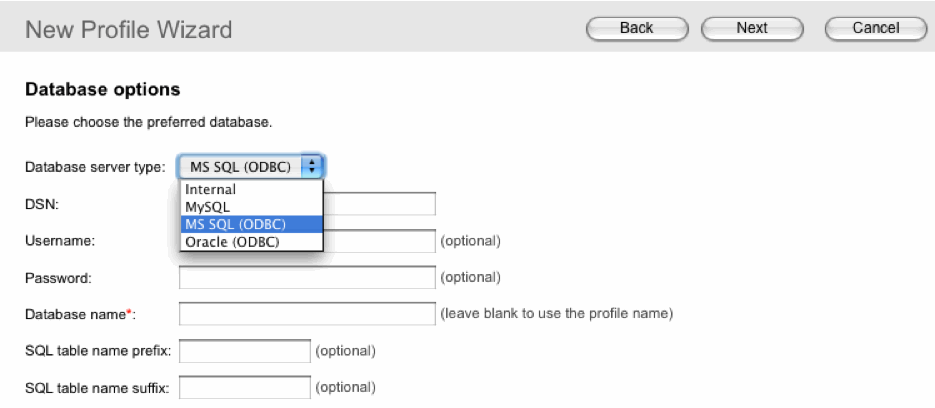
Sawmill 8 adds support for Microsoft SQL Server and Oracle, to the MySQL and internal databases supported by Sawmill 7. Like Sawmill 7 with MySQL, this “back-end database” use is transparent once it is configured--a profile which uses Microsoft SQL Server or Oracle works just the same as a profile which uses MySQL or the internal database, with all the same configuration and reporting capabilities. The only change is the location of the database storage, and the database engine used to run queries.
Use of an enterprise database engine with Sawmill can provide better performance through clustering, as well as improved reliability, redundancy, backup and recovery, and database management.
Role-Based Authentication Control (RBAC)
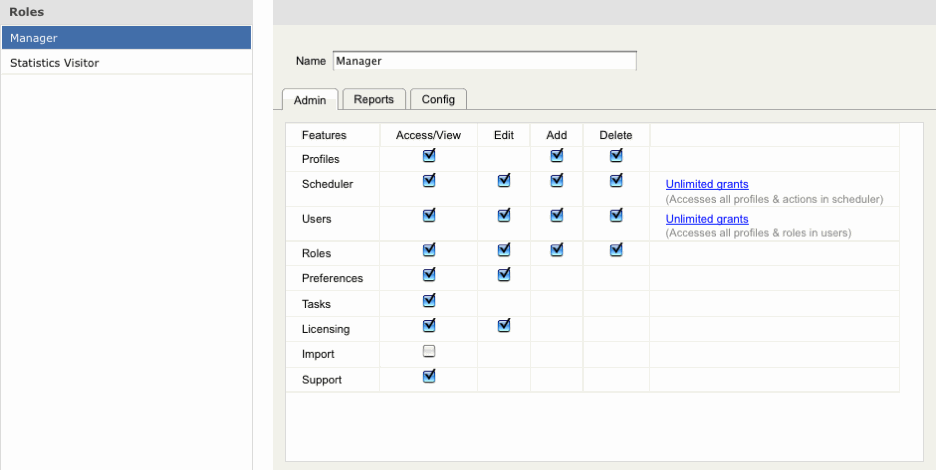
Sawmill 8 adds Role-Based Authentication Control, for highly granular user permission management. In Sawmill 7, there were only Administrators, who could do anything, and non-Administrators, who could only view the reports of specified profiles (and could not configure profiles). Sawmill 8 extends this by allowing the creation of any number of roles, each with specific permissions, and any number of users in one or more role. For instance, it is possible to create a role that can manage a particular profile, but not other profiles; and that can edit the log filters of that profiles, but not delete them; etc. The permissions of each user can be controlled at a very detailed level.
Real-Time Importing/Reporting
Sawmill 7 always operated in a “batch” mode: log files were imported periodically, often nightly; reporting was not available during import; and reports were then generated from that snapshot of the data, until the time of the next import. Sawmill 8 supports true real-time importing and reporting. A profile can be configured to read a continuous stream of log data, adding each line to its database as it appears on the stream. Reports can be generated at any time, and show the latest data in the database as of the moment of report generation. This allows a profile to show up-to-the-second reports at any time.
Improved Memory Management
Sawmill 7 could run out of memory on 32-bit systems, due to a number of memory management approaches which could cause high memory (or address space) usage for large datasets. Sawmill 8 improves memory management to keep memory usage low for even very large datasets, allowing enormous datasets to be processed on systems with limited memory, and on 32-bit systems.
Built-In SQL Database
Sawmill 8’s internal database supports a subset of SQL, allowing information to be queried directly from the internal database using SQL statements (Sawmill 7’s internal database does not support SQL queries). Sawmill 8 also uses a unified set of SQL queries internally to perform database operations on all supported databases (the internal SQL database, MySQL, Oracle, and Microsoft SQL Server), including the internal one, for better reliability and performance.
Enhanced Reporting User Interface
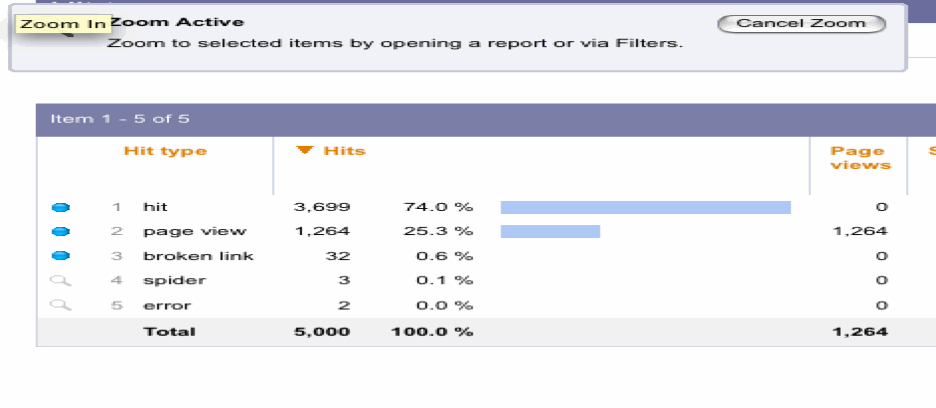
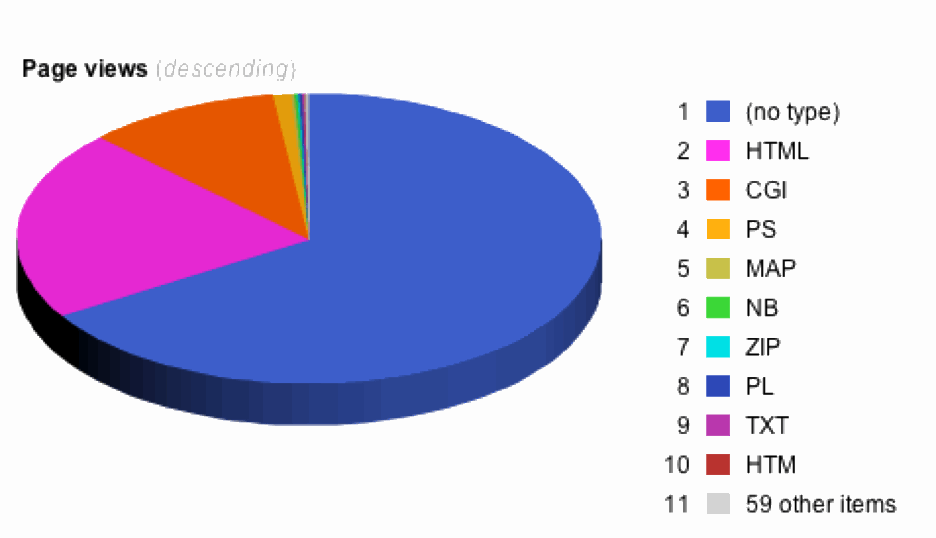
- Frames have been replaced with multi-column pages, for better integration with larger environments.
- Zooming is easier, due to a new approach that involves clicking an item, and immediately clicking a report name in the left menu to zoom to it (instead of using a “zoom to report” menu like Sawmill 7).
- Zoom supports clicking on multiple items to zoom simultaneously on several rows.
- Filters can be grouped into Filter Sets, and named and managed easily.
- A new Macros feature saves the current report and/or filter set, so it can be easily called up again later.
- Report customization from the Reports page is greatly enhanced, providing most of the functionality of Sawmill 7’s Report Editor without leaving the Reports page.
- Graphing improvements include 3D pie charts and smoother (anti-aliased) graphs.
- The current report can be emailed immediately.
- It is now possible to filter on numerical fields with Report Filters, for instance to select all events with bytes > 1024.
- Session fields are integrated with other fields, so any report can include a “sessions” column, a “session duration” column, or other session-related columns; and session reports like Session Pages can contain non-session columns like “referrer.”
- New “report table filters” can filter the table after it is generated, allowing dynamic suppression of table rows; e.g., show only rows with more than 15 page views.
- Pivot tables can now be created dynamically from the Reports interface; for instance, an indented “audio codec” column can be added to a “video codec” report without leaving Reports.
- An improved date filter picker allows relative date selections like “last 3 months” or “yesterday.”
Enhanced Administrative User Interface
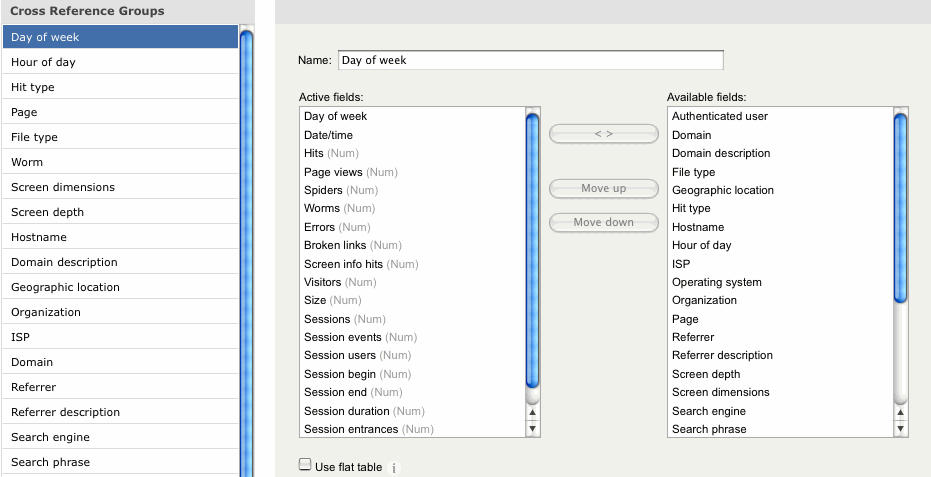
- The Log Fields Editor
- The Database Fields Editor
- The Session Fields Editor
- The Report Fields Editor
- The Cross-Reference Groups Editor
- The New Field Wizard. This new wizard makes it much easier to create custom fields; it creates a new log field, an associated database field to track it, a report field for use in reports, a log filter to set its value, a cross-reference table to cache it, and a new report to display the results, all in a single step.
Improved Scheduler
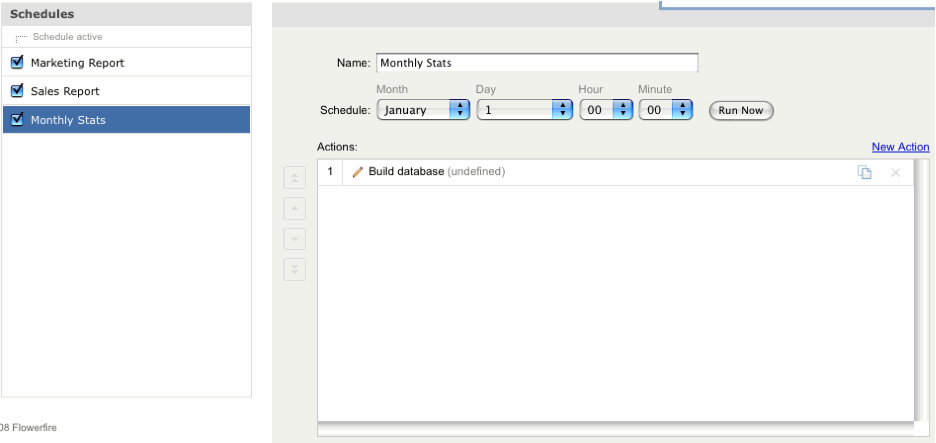
Simplified Date Filter Syntax
Sawmill 8’s data filter syntax is vastly expanded over Sawmill 7. In Sawmill 7, date filters could be 15/Jan/2008-15/Feb/2008, or similarly for months and years; in Sawmill 8, a wide range of intelligently interpreted options are also available. Some examples:
- last 10 months
- 3 months ago-2 months ago
- q1/2008
- q3/2008-Feb 2009
- yesterday
Database Import/Export
Sawmill 8 can export an entire database to a text format, and import a database from that text format (Sawmill 7 provided no database import or export capabilities). This makes it easy to move a database between platforms, or from one database server to another, without having to rebuild it from the log data.
Improved Report Caching And Performance
Sawmill 8 adds several additional levels of report caching, beyond the HTML report cache used by Sawmill 7. In Sawmill 7, any change to a report would require it to be regenerated; in Sawmill 8, many changes can be regenerated from the cache, including paging through the report, changing the sort, or changing the visible columns. This makes some report operations much faster in Sawmill 8.
Sawmill 8 also takes advantage of multiple processors or cores, when available, to improve the performance of reports. In Sawmill 7, report tasks always used only one processor. This can result in much faster report generation for very large datasets.
Additional Log Source Options
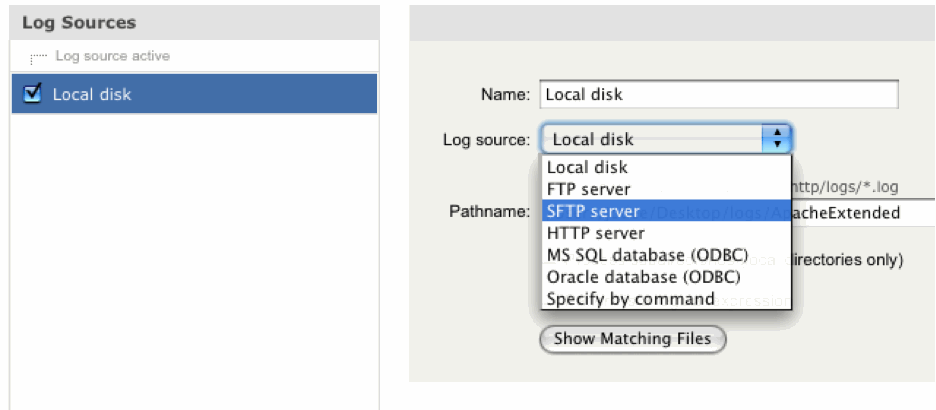
Sawmill 8 adds support for SFTP and SQL log sources, to the list
supported by Sawmill 7 (local file, FTP, command, HTTP). SFTP provides
a more secure, and more reliable, method for downloading log data from
a remote system. SQL log sources can read log data directly from a SQL
database. Sawmill 8 can also recursively process a hierarchy of folders
on an SFTP of FTP server using a single log source; Sawmill 7 could
only download the contents of a single FTP folder, not its subfolders.
Improved Log Import Performance
Sawmill 8 automatically splits log processing across multiple processors, to improve import performance. Sawmill 7 also supports splitting database builds across processors, but Sawmill 8 detects the number of processors automatically to do the split, and Sawmill 8 also uses a efficient channel of communication between processes to reduce disk contention between threads, for better performance and scalability of the initial data import step. Sawmill 8 can also be configured to split log processing across multiple servers in a cluster, for even higher performance (Sawmill 7 supports only multiprocessor on a single server).
Sawmill 8 can be configured to build cross-reference tables, indices, hierarchy tables, and session tables, on-demand, deferring them until they are needed. When it is configured in this way, the initial database import step is the only step of a database build or import, so reports are available as soon as the import is done (or sooner, if it’s using real-time; see above). That makes database updates much faster, because they do not need to build all the support tables; those tables will be built later, when a report requests them, if at all. This provides an opportunity for configuring a report-speed vs. import-speed tradeoff that does not exist in Sawmill 7, where all support tables are always built automatically during database build and update.
Sawmill 8 uses improved SQL queries for building cross-reference tables. Cross-reference table generation, which is the largest part of database build time, are much faster in Sawmill 8 than they were in Sawmill 7, especially during database updates. Sawmill 7 rebuilt all cross-reference tables from scratch after each update; Sawmill 8 performs an incremental update of the cross-reference tables, which is much faster.
Other Enhancements
Sawmill 8 includes many other enhancements over Sawmill 7. Some of these are:
- “Report fields” for more flexibility and fine-tuning of report elements and table data.
- Direct URL access to reports; URLs can include profile name, report name, date filter, filter expression, filter comment.
- “One-level slice” of a hierarchical field in a report column; for instance, a months report (across all years).
- New Calendar report.
- Independent sort field and sort direction of the drill down field.
- Option to include row numbers and aggregation rows when exporting a CSV table within the reports interface.
- PDF report generation from the Scheduler.
- Minimum and maximum aggregation rows to tables.
- Default date filter per profile.
- Table row selection (to mark a row in yellow).
- User-created actions (-a options), with fully customizable parameters and behavior.
[Article revision v1.0]
[ClientID: 43726]